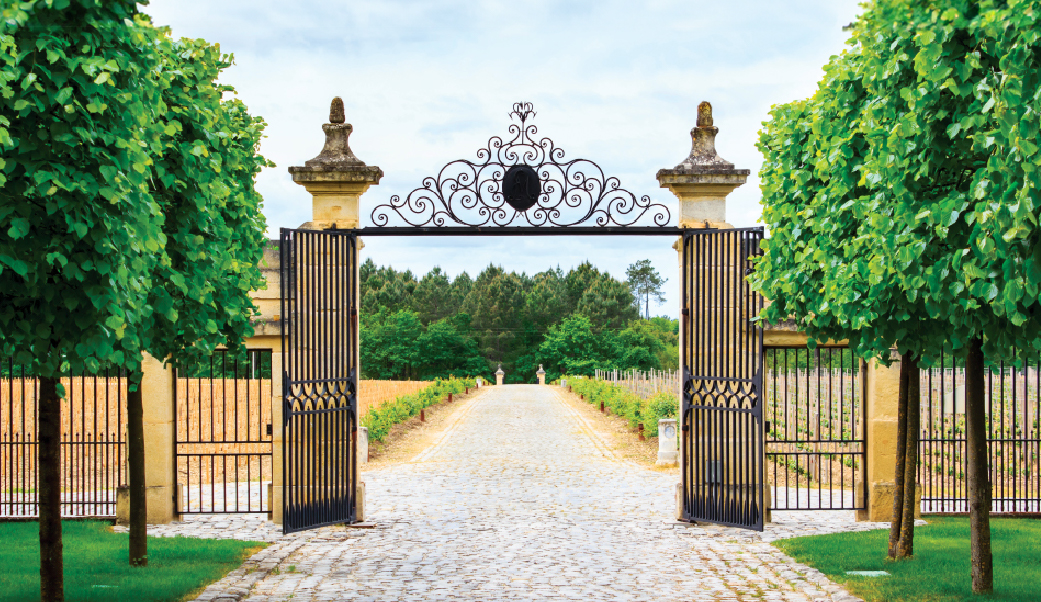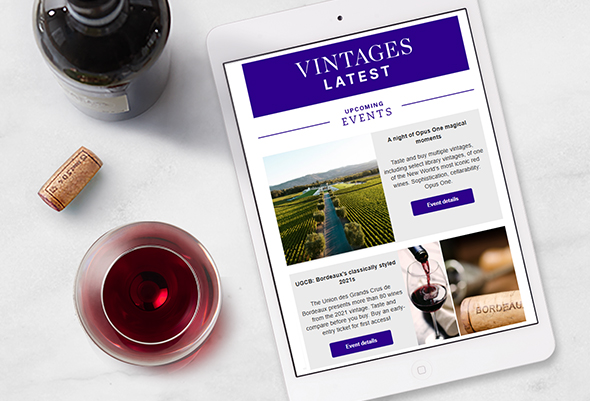Vintages Bordeaux Futures

Bordeaux Futures 2023:
new inventory and multiple sizes
For the savvy shopper, 2023 is a vintage to shop up. The best values are found in the region’s best wines.
Bordeaux Futures 2023: our impressions of the vintage
Summary
The 2023 vintage is a fascinating one, unique from any in recent memory, and not solely for what happened in the vineyards. A complex assortment of environmental and commercial factors made it a challenging vintage, but one that offers excellent opportunities for the savvy shopper.
Unlike the drought of 2022 or the frost of 2021, no specific weather event defined the 2023 vintage. Damp weather and the resulting problems with mildew created significant issues for some producers, but not broadly enough to categorize the vintage. For those who managed the disease pressure, the size of the harvest is healthy. This, coupled with uncertain economic times, softer global demand, and what is widely considered an inconsistent vintage, means we’re expecting significant price reductions from the 2022s. At the time of writing, it’s safe to say that most châteaux will be reducing their prices by between 15% and 25% or more.
2023 Vintage Overview
The vintage began with a damp spring but a critical break in the rain at the end of May provided excellent conditions for flowering and laid the foundation for an ample crop. However, more wet weather followed, and mildew pressure continued through July. Modern control methods kept the berries in good condition, though for some producers the mildew did affect yields.
Summer was hot but cloudy with high humidity. The white harvest started in late August and these wines are very good, with enough ripeness and plenty of acidity. The red harvest began in early September, with Merlot being picked first. Significant rain in early September put a halt to harvest until the middle of the month. The remainder of the harvest took place under ideal conditions, with a long warm, dry period that extended through to the middle of October. While forecasters predicted severe storms leading up to and during the harvest, they never materialized and producers who chose to wait were rewarded with fruit that achieved optimal ripeness and plenty of intensity. Harvest was by and large completed by mid-October and the quality of the fruit showcased how a warm, dry fall can salvage an underwhelming summer; something that has not been possible to say of Bordeaux in a long time.
Ultimately, the vintage is a château vintage, as producers’ decisions defined the quality and style of the wine more than the weather. Spraying in spring was critical, and producers with the deepest pockets, or the greatest determination in the vineyard, were the most successful at limiting the impact of mildew. An abundant crop had to be deftly managed, dropping fruit to intentionally lower yields and encourage ripening. It took fortitude to gamble on potential physiological ripeness and hold off on harvesting despite the dire forecasts. Those who managed these decisions produced outstanding wine, but missteps impacted the quality from some producers significantly.
As a generalization, the Cabernets (both Sauvignon and Franc) were well-positioned to take advantage of the warm, dry fall, and both show considerable power and ripeness. First and foremost, great terroirs produced successful wines, as can be seen from the Merlot-dominant Pomerol plateau, which are among the best wines of the vintage.
Across the board, the 2023s reveal a correlation between the financial resources available to a producer (or determination of growers to fend off the mildew) and the success of their wines. For this reason, top châteaux and prime terroirs certainly fared better than others.
Over the course of our tastings, we often found that all the wines from a particular stable either performed well or suffered collectively; a clear reflection of the choices made by individual châteaux through the season. The wines of Château Montrose, including Château Tronquoy and their second wine La Dame, were outstanding, as are the wines from Mouton including d’Armailhac and Clerc Milon. Lafite’s 2023 Duhart-Milon is as good as any vintage we have tasted. On the Pomerol plateau, the wines that most impressed were La Conseillante and L’Eglise Clinet. The wines from Lafleur were all superb, with Grand Village offering tremendous value. As always, Christian Moueix did an excellent job, especially with Bélair-Monange, Latour à Pomerol and Hosanna.
Conclusion
The 2023 vintage offers a stark contrast to the 2022s. We saw consistent quality across regions and price bands in 2022, but we also saw consistent price increases. In 2023, the quality is more variable, but prices, especially at the high end, are coming down. For the savvy shopper, 2023 is a vintage to shop up. The best values are found in the region’s best wines. – Vintages panel
Order now. Wines arrive in 2026 >

Bordeaux Futures 2022
Order today! Quantities of these new formats are limited. “The 2022s are some of the most memorable young wines I have ever tasted in Bordeaux.” Antonio Galloni.
Paul Farrell, Senior Category Manager, European Wines, shares his impressions of Bordeaux’s 2022 vintage.
“Over the course of the en primeur tastings, I had the opportunity to speak with château principals, vignerons and négociants from across Bordeaux, and one word kept reappearing with astonishing consistency in connection with the 2022 vintage: surprising.
The 2022 growing season was hot and dry, indeed as hot and dry as any vintage on record, drawing comparisons to the historic 2003 vintage, albeit without the extreme heat spikes that exceeded 40°C. But it seems nobody told the wines. The surprise that everyone has been enjoying is that the wines of 2022 have plenty of ripe fruit, with higher alcohol than we have seen over the past decade, typically between 14 and 14.6, but low PH levels. PH is a measurement of total acidity; the lower the PH the higher the total acidity. This runs counter to what one would expect from such a hot year. Surprise!
How could such wines be made in a hot vintage? Though there are several theories being discussed, no one could say for certain. To my mind, the soundest argument is that 2022 saw drought conditions through March and April, which is unique for Bordeaux as the spring is typically wet and was so even in 2003. These difficult early-season conditions meant that the vines lived their entire life cycle in a drought environment. From budbreak through flowering, fruit set and veraison, the vines were constantly stressed, labouring to produce healthy grapes while preserving water.
Several châteaux took pictures of their vineyards in late August just before harvest, because they were astonished at how green the canopy was and how healthy the grapes appeared. Despite the aggressive heat there were no brown leaves and no sunburn damage. The plants were clearly thriving. Surprise!
It could also be the simple truth that, since the 2015 vintage, hot, dry summer weather has become the norm in the region and the Bordelais have become adept at working with these challenging temperatures. And, of course, even the plants themselves could be adapting to these conditions.
Whatever the reasons, 2022 has produced outstanding wines across all appellations and price bands.
For me, Carmes Haut-Brion, Canon and Pichon Lalande are clear standouts. Fonroque continues to perform well and, following an excellent tasting at L'Église-Clinet, we added the tremendous value found in Montlandrie and Les Cruzelles to our selection.
Buy online - Bordeaux Futures 2022 >
Find out first!
Get Vintages Latest emails to stay in the know about new releases, special offers, events and more
Wine 101
Learn about the world's top wine styles and regions from our feature story archives.
Shop the New Release Collection
Hundreds of new and remarkable wines to try every month.



